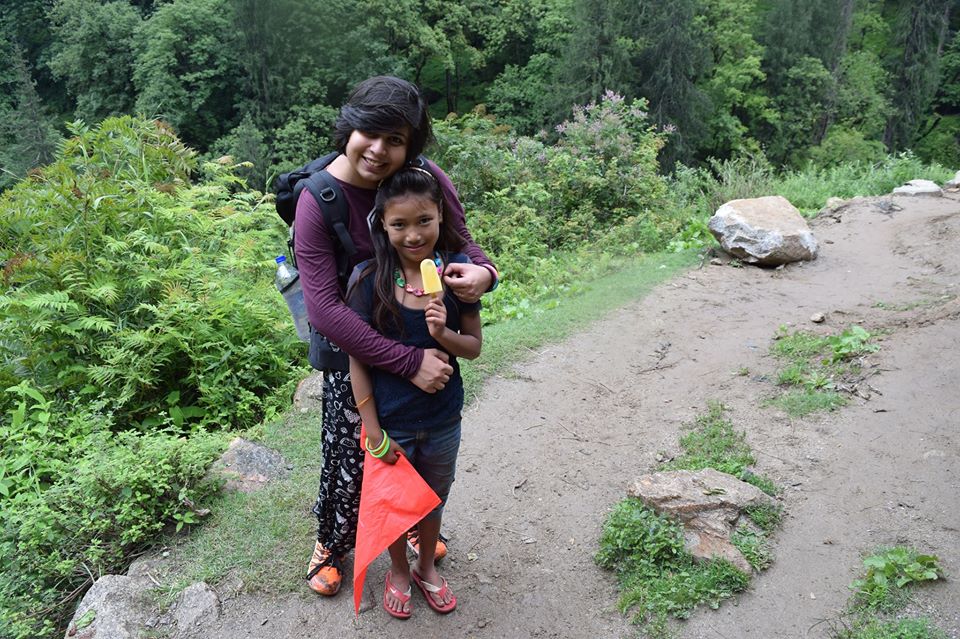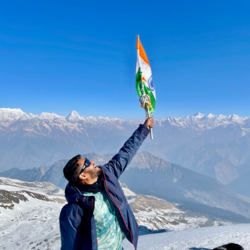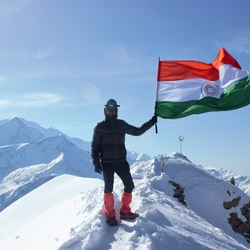When we talk about the treks in Sikkim, Goecha La tops the chart in the list of the most winsome treks in the region. The views of Mt. Kanchenjunga are gigantic and the vibrant flora and fauna of the region are spectacular. It is a culturally rich region with many mythical stories and a lot of attractions to visit in Yuksom, the base point.
Home to Kanchenjunga Peak, the flora, and fauna on this trek change avatar with changing seasons. Mt. Kanchenjunga appears to be a stone-throw away from you. The exhilarating landscape is another reason apart from the exhausting trail that will leave you gasping for breath.
A lot of times, people ask us for the best time to do Goecha La Trek. There is no one particular time to do this trek. Every season gives you an altogether different experience and a different takeaway from the trek. Winters are great to learn a few trekking tricks whereas autumn will give you some prize-winning photographs.
Here is what each season has to offer on Goecha La trek:
SUMMER: A PARADISE FOR BIRD-WATCHERS AND SNOW-LOVERS
April-May are the months for bird watching. Goecha La becomes a paradise for bird-watchers. Grey Bushchat, Greentail Sunbird, and European Sparrow are few of the many indigenous species of birds you will get to spot on the trek as you walk through Kanchendzonga National Park.
End of March-April is the time when the snow starts to melt and the trek is doable. However, the trek is still loaded with snow. Lower altitude has more flora than higher altitudes. As the snow melts, the flowers begin to bloom once again.
The days are sunny and bright throughout but the nights get chilly. There are heavy chances of rainfall even in the months of April.


MONSOONS: A STRICT NO-NO
The southwest monsoon approaches Sikkim early and rains start by the end of May. It is tricky to do Goecha La Trek between the end of May and August. Sikkim is one of the wettest places in India and receives high levels of rainfall each year. The trail becomes slippery which causes frequent landslides.
Also, there is an added danger of leeches in the jungle. The trek becomes considerably difficult to do in the monsoons – this season on this trail is best avoided.
AUTUMN: FOR THE LOVE OF CLEAR HD VIEWS
September-October are the months when you get clear HD views of Mt. Kanchenjunga. The skies are cloudless and the monsoon washes away all the dust in the air. The colorful flora of the region adds an iridescent charm to the trek. The sun rises are the prettiest. When the first rays of sun fall on the snowy peaks, the orange glow is poetic.
Capture the clear-cut shots of snow clad mountains. Frey’s peak, Mt. Koktang, Mt. Rathong, the Kabru family of peaks, Mt. Khangchendzonga, Mt. Pandin, Mt. Tien Chenkhang, and Mt. Jopuno are all crystal clear in September and October.
There won’t be much snow on the trek, just a few slippery patches here and there. Although there are still chances of a downpour, the weather is pleasant overall.


WINTERS - FOR TOUGH SOULS
Winter months of November-December add another level of challenge to the already moderately difficult trek. Which, in fact, makes it a little more adventurous.
On the trails laden with heavy snow, one gets to use technical trek equipment like microspikes. One requires special tents to sustain the sub-zero temperatures during winters.
(Read our take on why Goechala must be trekked in winters, here.)
Fresh snowfall can be expected during this time. Temperatures drop to -20 degrees Celsius at night. The chilly winds will aggravate the biting cold. The meadows have colours of orange, purple, and yellow smeared all over the shrubs.


Goecha La is a trek of many treasures and can be done during various windows of the year depending upon the kind of experience you seek from the trek. Whether you are a bird-watcher, a tough trekker, or an avid photographer, you can always pick a season best suited for you to do this trek.
We hope this gave you a guideline of sorts to help you narrow down on a season for your Goecha La adventure. Now all you need to figure out is how to reach Yuksom, the trailhead village for Goecha La.
This article was originally written by Dhaarna Kukreja on 12-01-2018.
It was edited and updated by Neeti Singhal on 7-11-2023.






